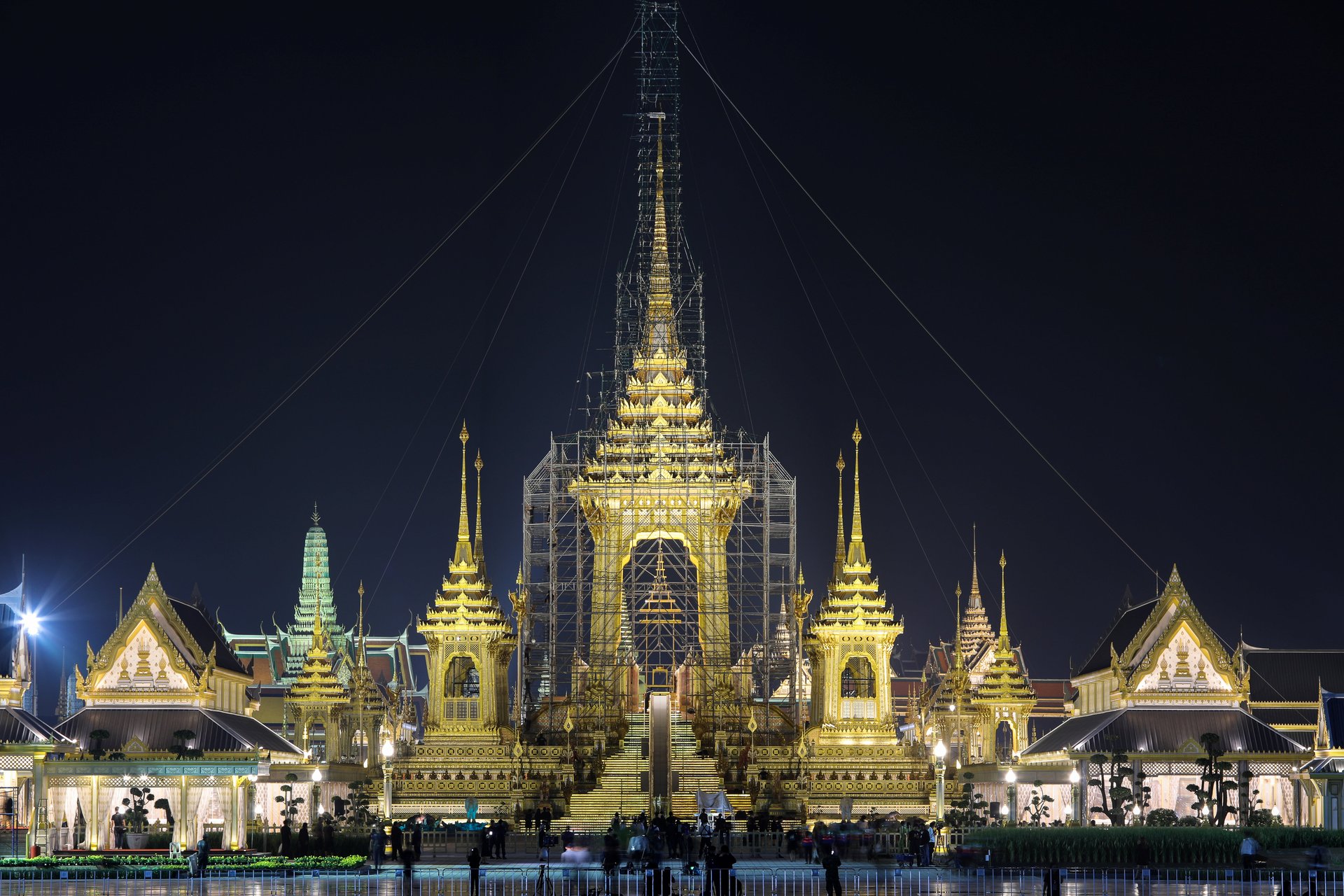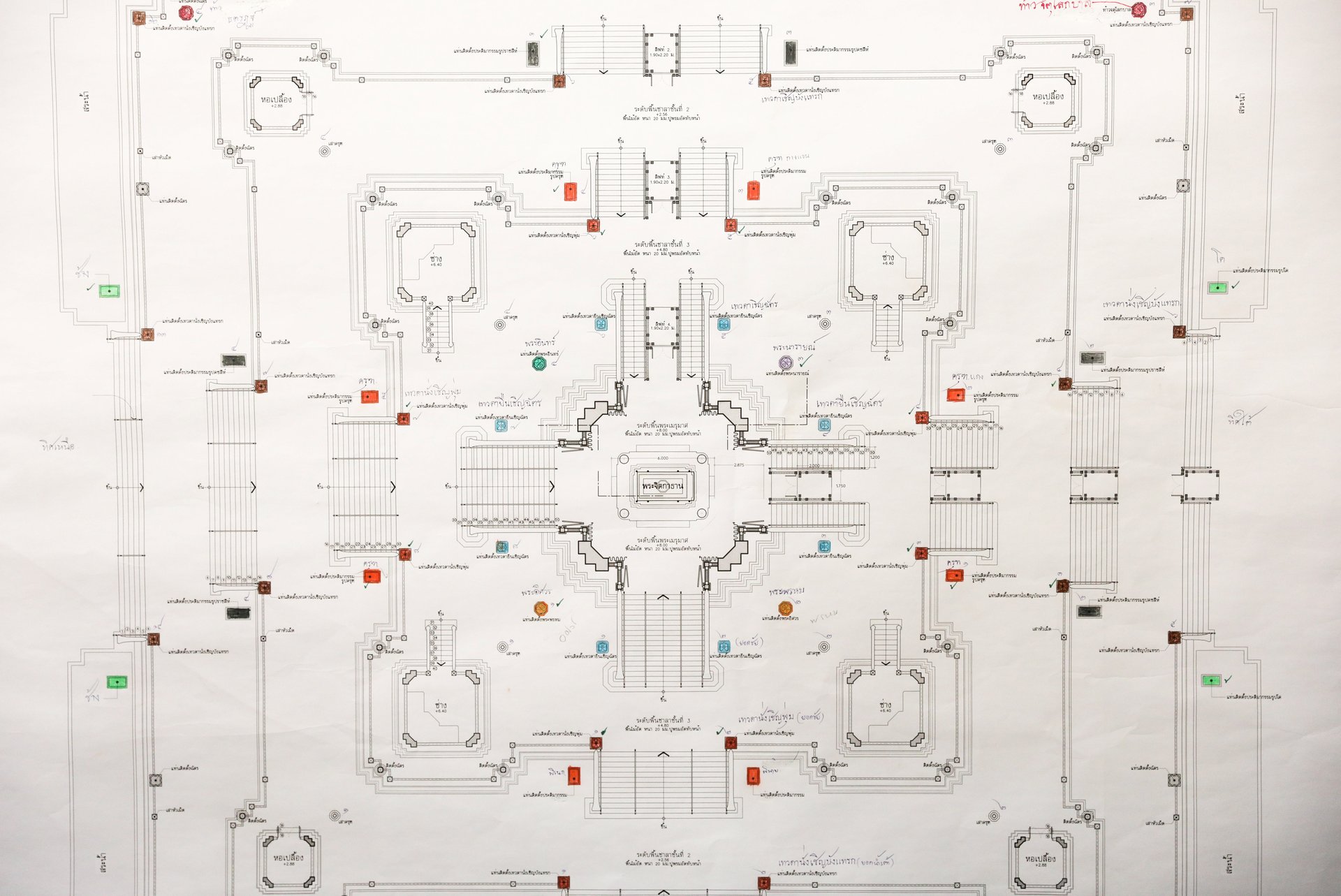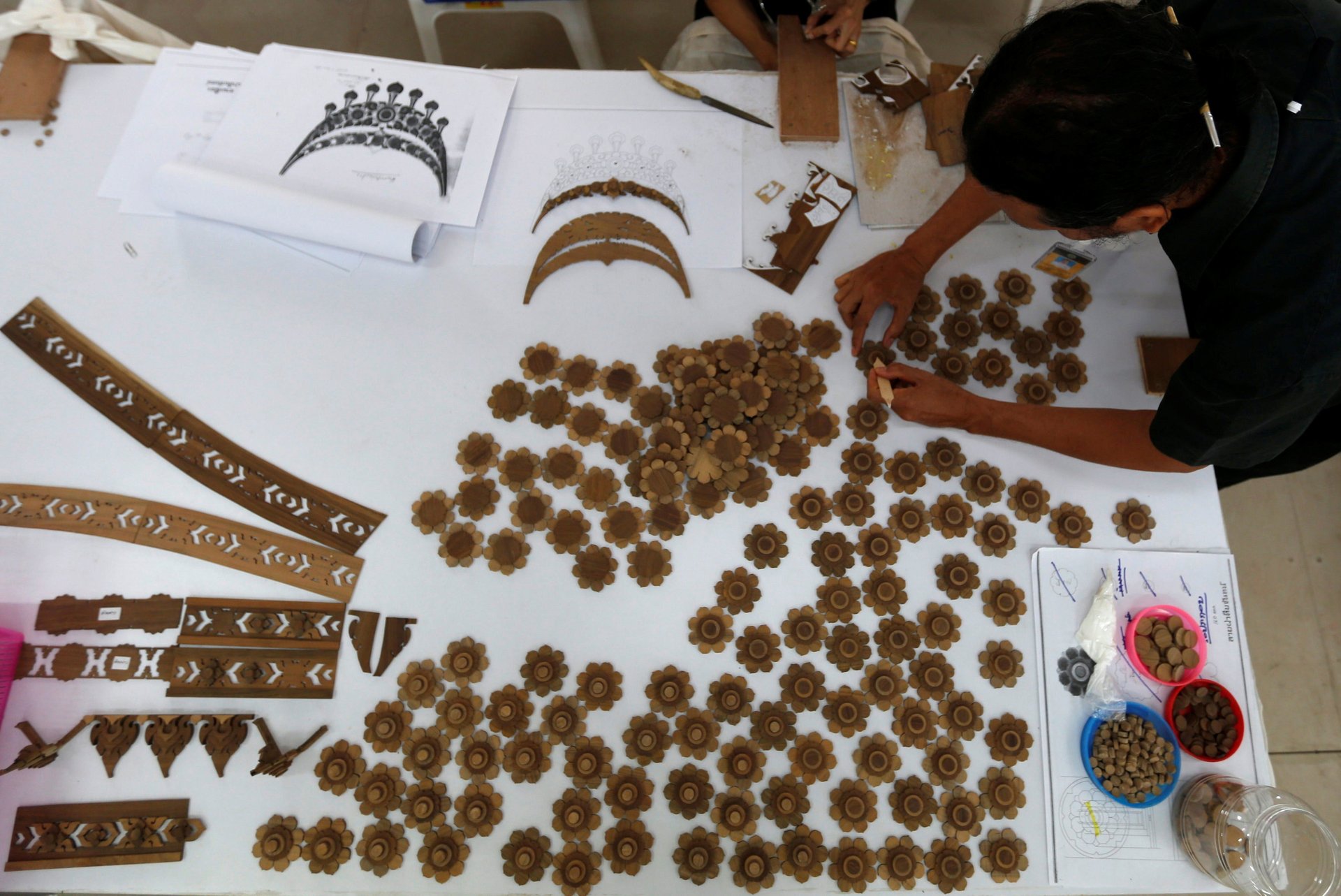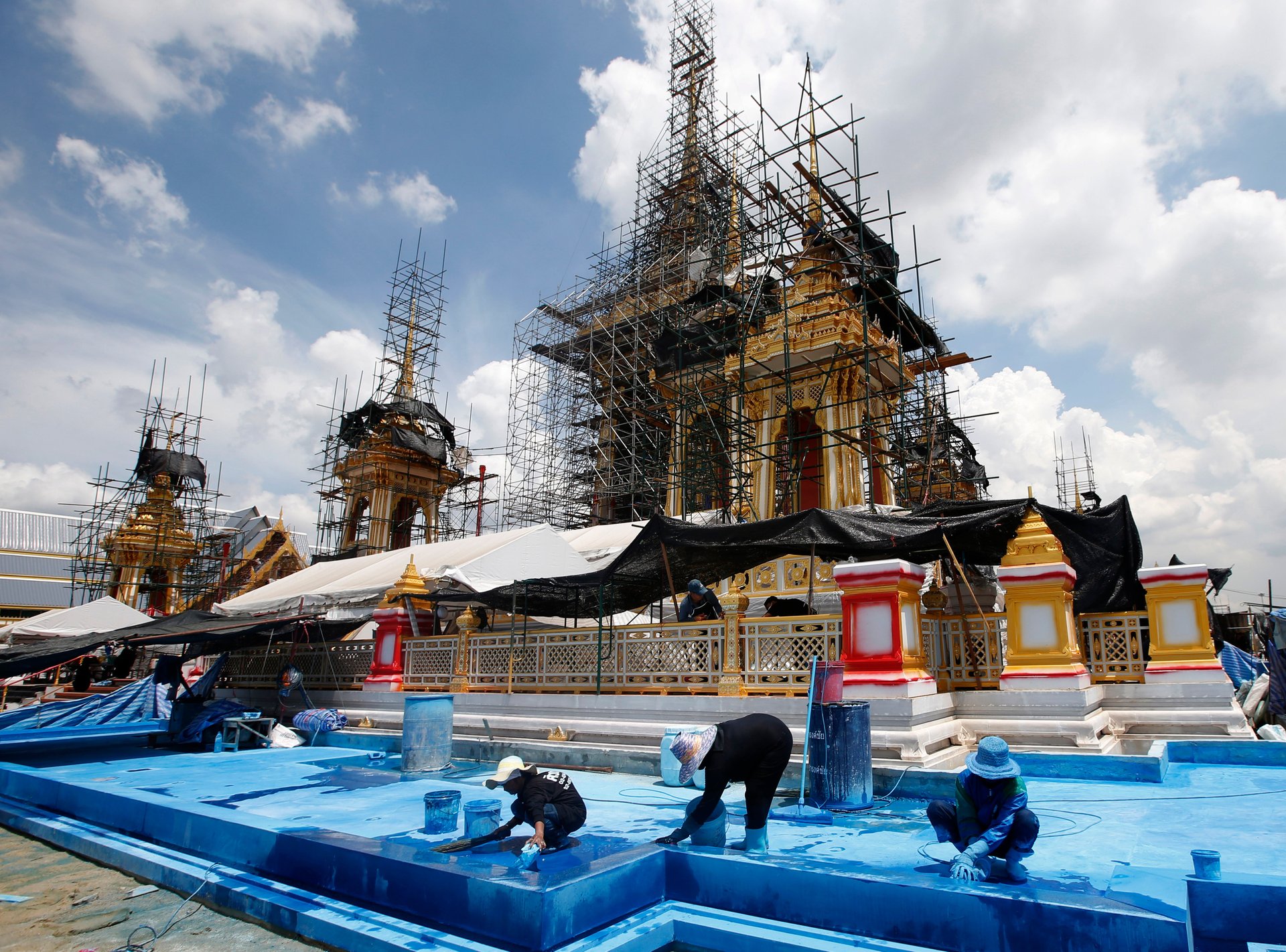Thai architects are eager to see the most important design of their lives go up in flames
The world is witnessing one of the most elaborate funeral ceremonies in history.


The world is witnessing one of the most elaborate funeral ceremonies in history.
After 12 months of mourning, Thailand is sending off King Bhumibol Adulyadej’s soul to the afterlife via a grand five-day farewell. Venerated by the masses as a god, Bhumibol is credited for bringing peace and relative prosperity to the Southeast Asian nation during his 70-year reign.

At the center of the royal funeral is a $30 million, nine-spire structure where the beloved monarch’s body will be cremated. For months now, legions of Thai architects, designers, artisans, and craftsmen have been working on the funeral complex in Bangkok’s Sanam Luang field. They’ve erected a series of golden pavilions festooned by thousands of elaborate sculptures, textiles, art works and sandalwood flowers. The pyre will go up in flames with the king’s body at 10pm on Thursday (Oct. 26), after ceremonies starting at 5:30pm that include a symbolic cremation.

The concept for the crematorium was created overnight by two designers from the Thai Ministry of Culture. Architect Theerachat Weerayuttanon and art technician Korkiat Thongphut tells local magazine BK that they were asked to start working on it mere hours after news of the 88-year old king’s passing was confirmed.
“We were crying while making the designs,” said Thongphut. “We wanted to believe he hadn’t passed away but had to face the truth and do our duty.” Weerayuttanon and Thongphut had only 18 hours to deliver the ultimate tribute for a king whom many consider as Thailand’s greatest modern monarch.

The duo toiled through the night, rejecting several ideas until landing on a concept based on the schematics of the Phra Sumeru mountain (Mount Meru), which is considered the center of the Hindu universe. Rooted in Buddhist and Hindu religion, Thais consider their kings earthly avatars of the god Narayana and their passing signals a return to heaven. Thongphut explains that Phra Sumeru is the sacred place where Thais believe the king’s spirit will return to.

The crematorium’s pavilions will be filled with over 600 sculptures of gods and mythical creatures. Nearly every surface of it is decorated with handmade traditional crafts that evoke Rama IX aesthetics (the late king was the ninth monarch of the Chakri dynasty). “Working on a scale like this normally takes three years, but everything must be done in less than a year,” said Korkiat who worked with several construction companies and teams of artisans to make the deadline.

Dignitaries from 30 countries, including Bhutan’s King Jigme Khesar Namgyel Wangchuck, Queen Mathilde of Belgium, and Queen Maxima of the Netherlands and 250,000 Thais and visitors are expected to attend the king’s funeral in Bangkok. For mourners outside the capital city, the government has also erected 85 replicas of the crematorium and 876 sandalwood pavilions throughout Thailand. Thai embassies around the world have been convening sandalwood flowers crafting parties so they can participate in the royal funeral from afar.
A month after the funeral, what is left of the royal crematorium will be completely dismantled. Nothing will remain except for the king’s relics.